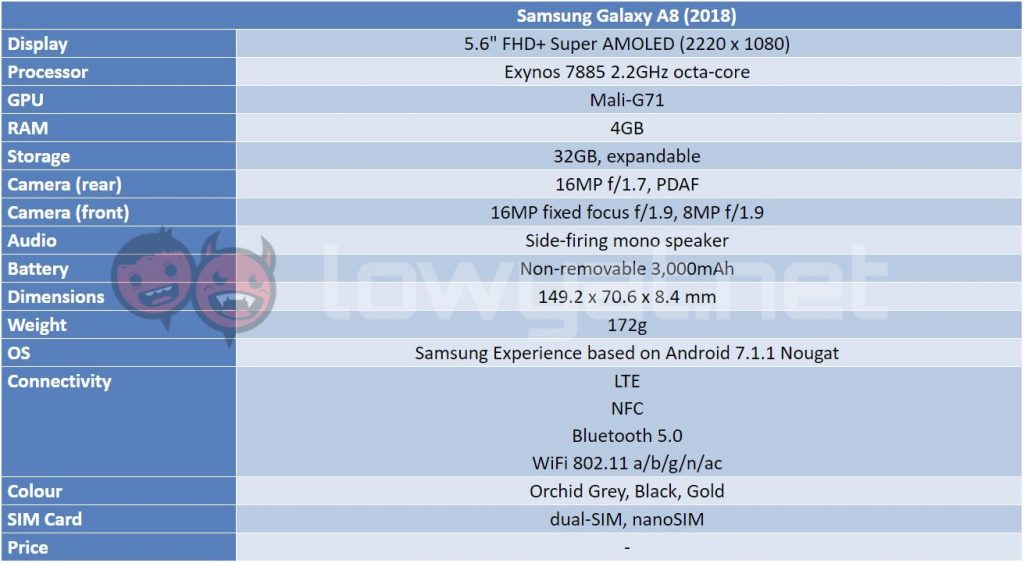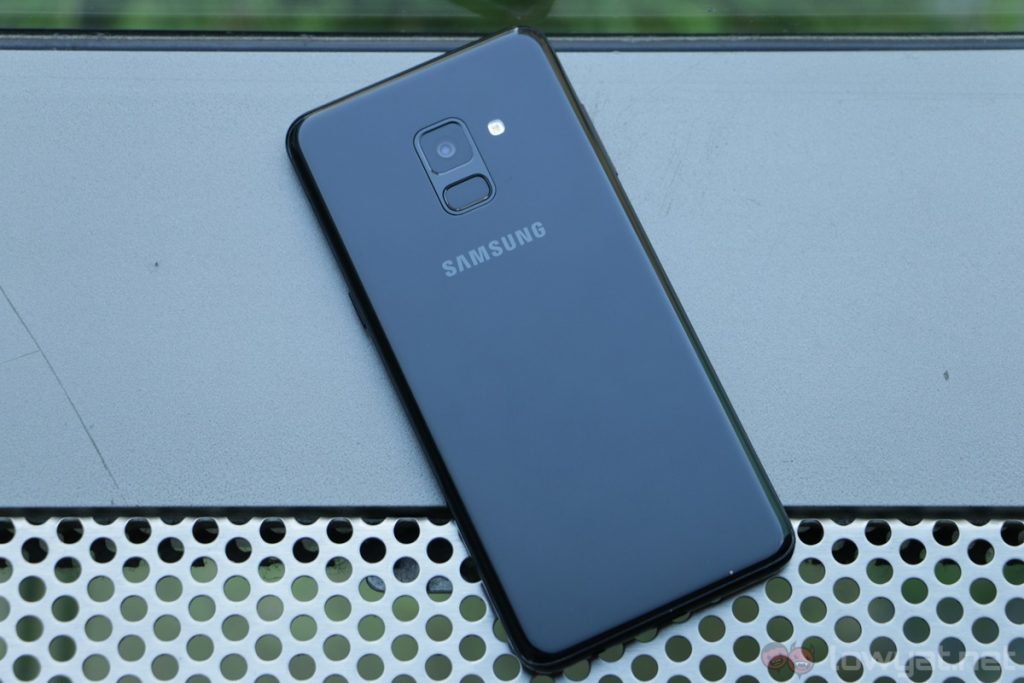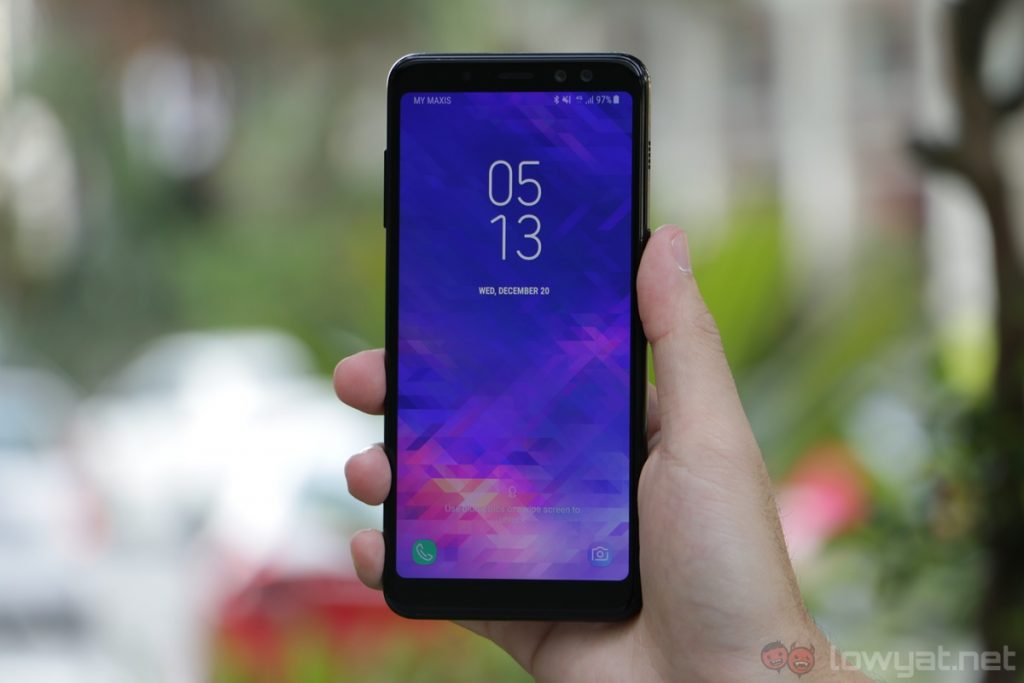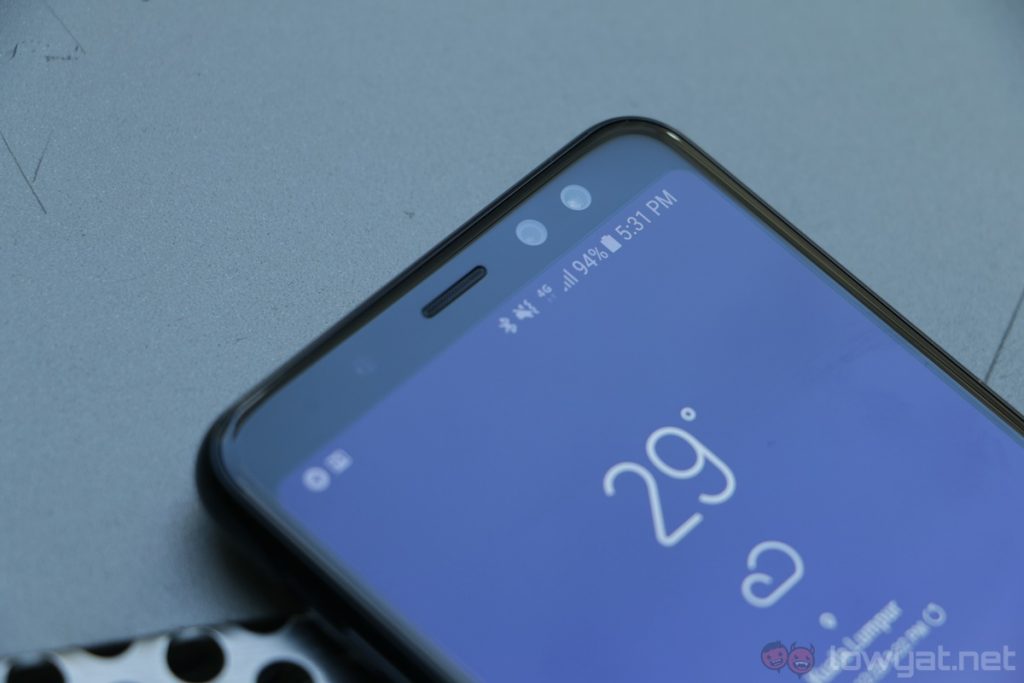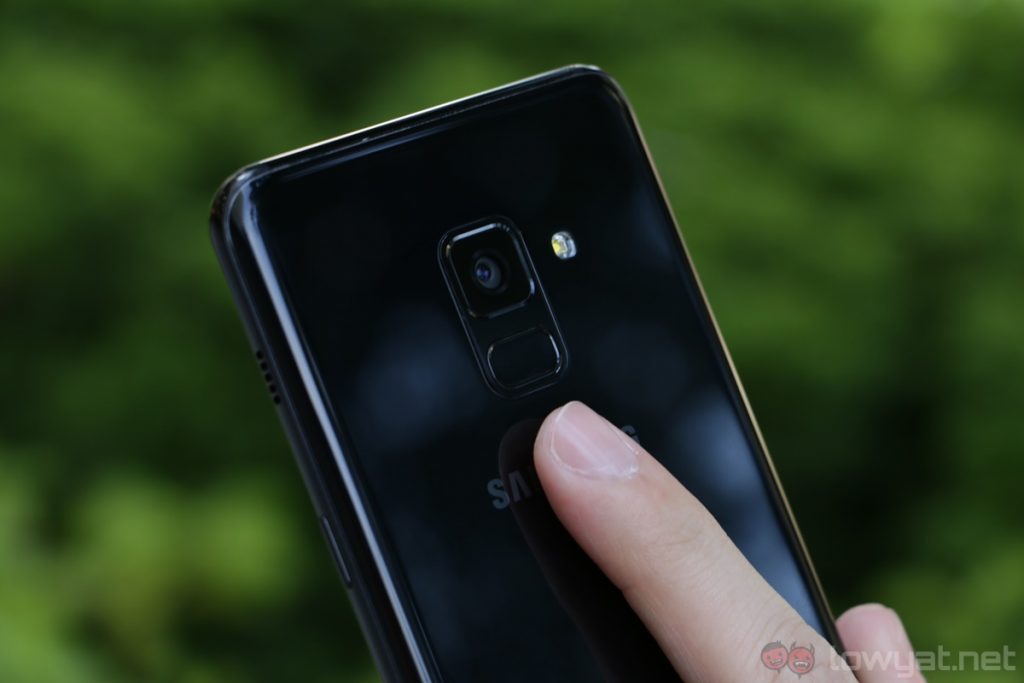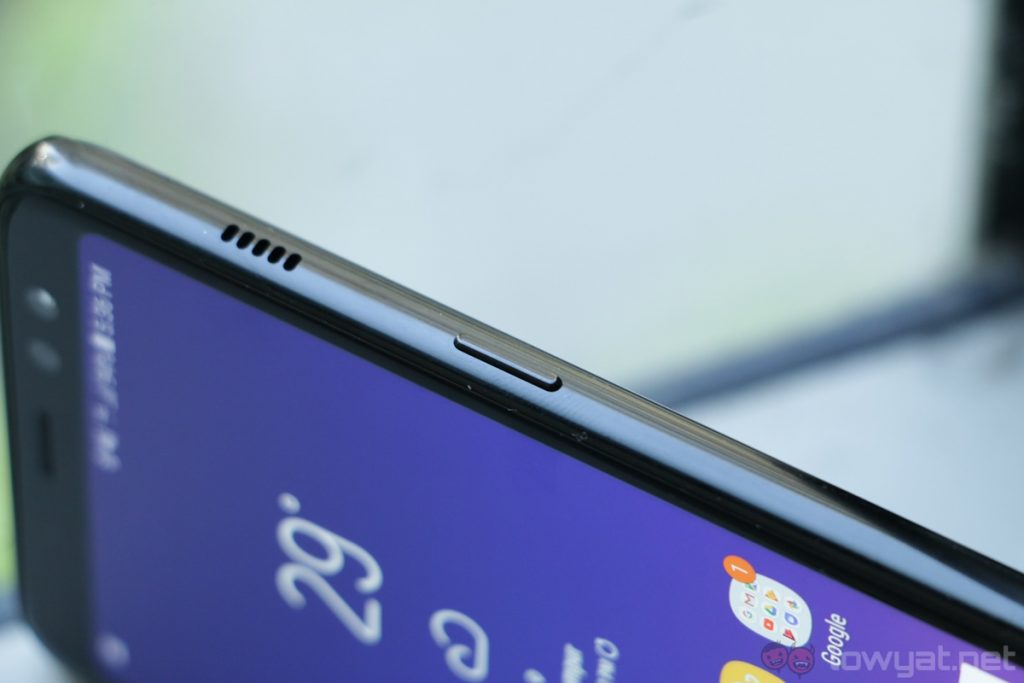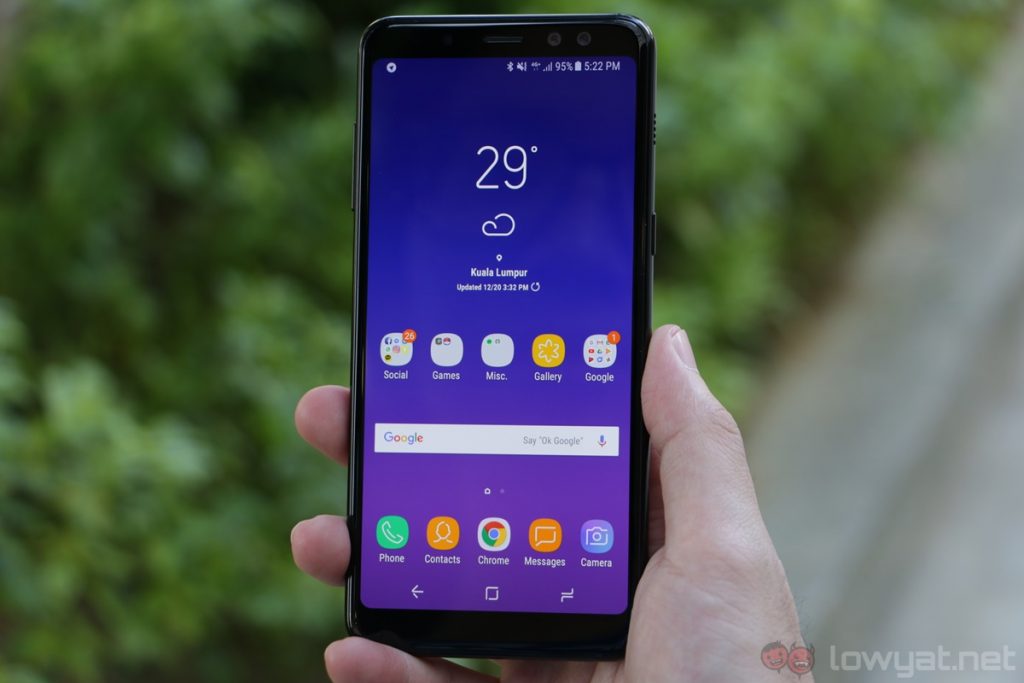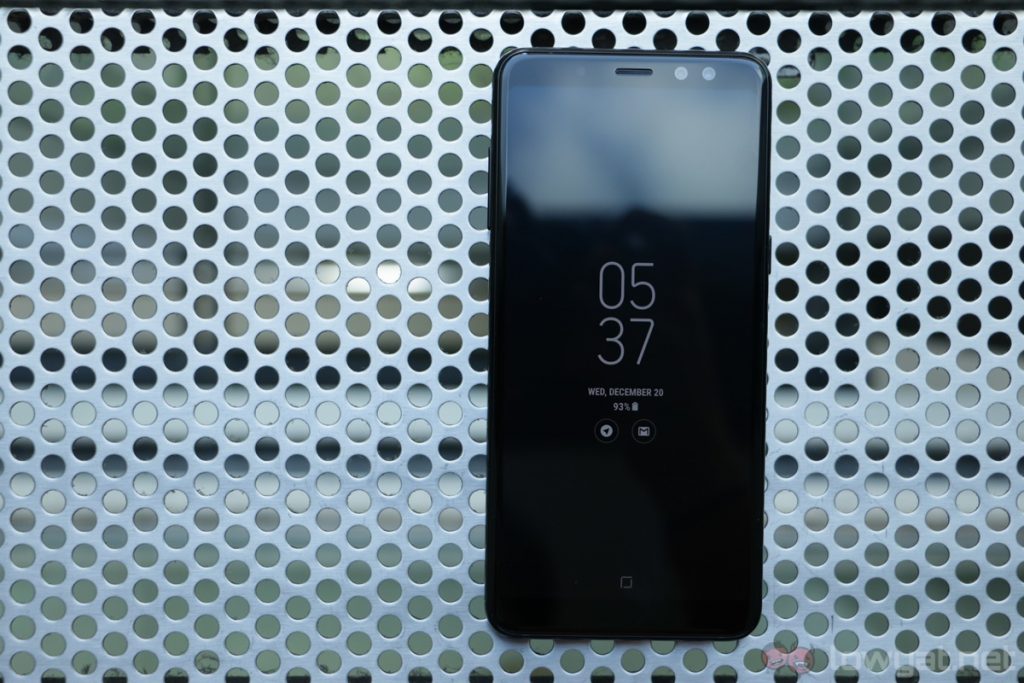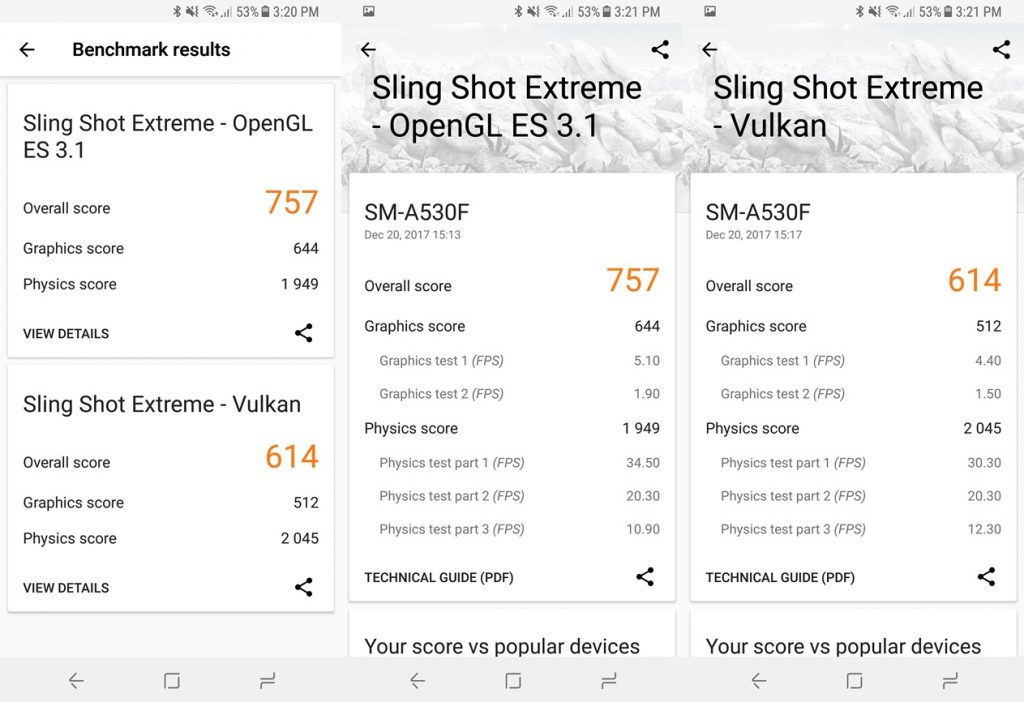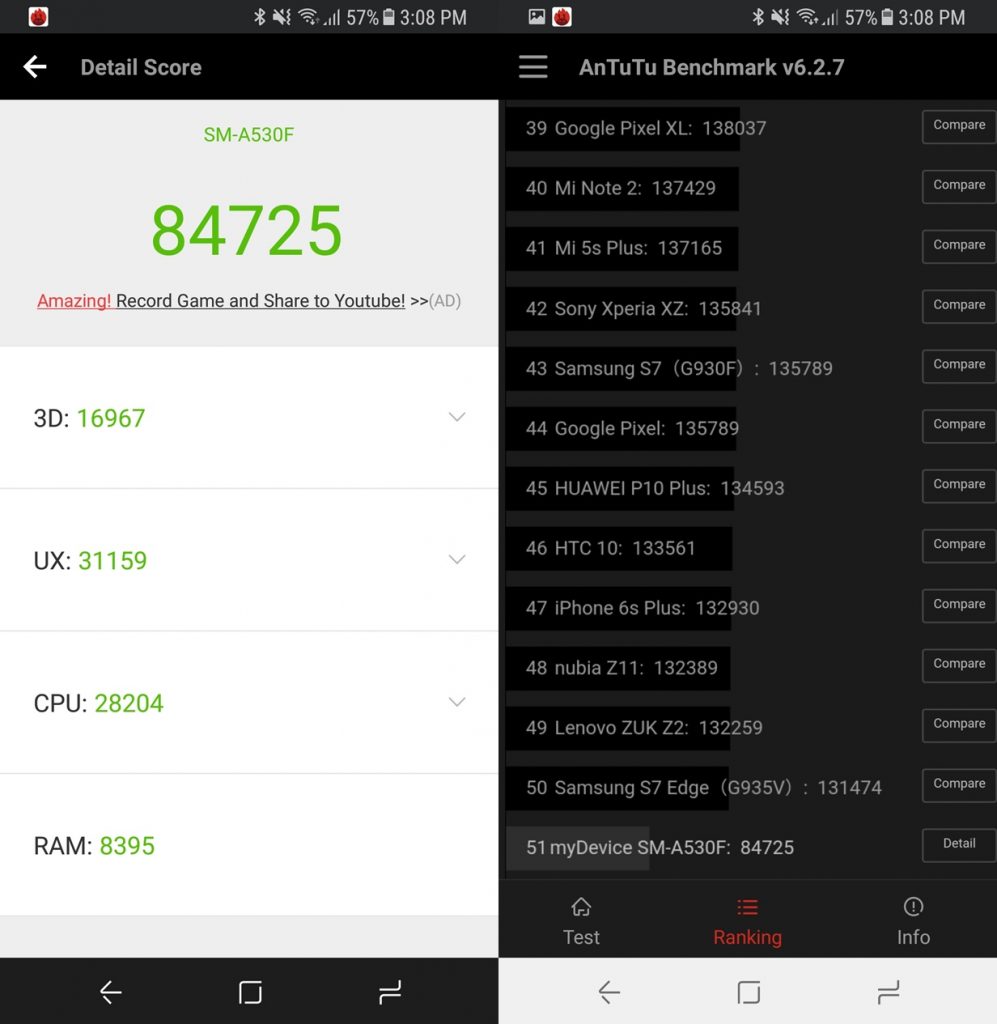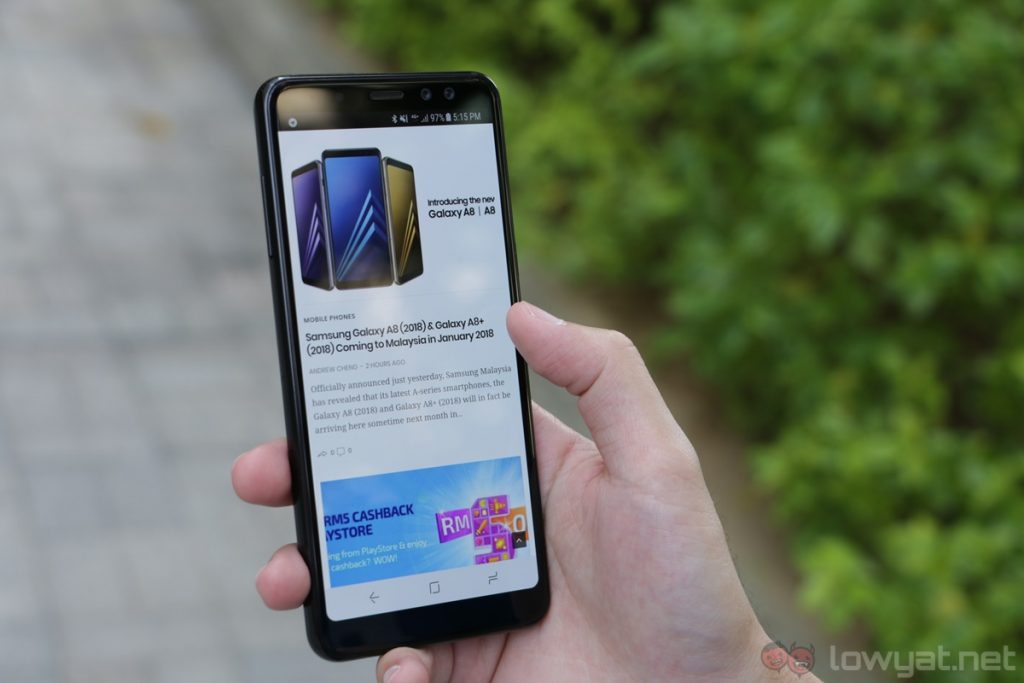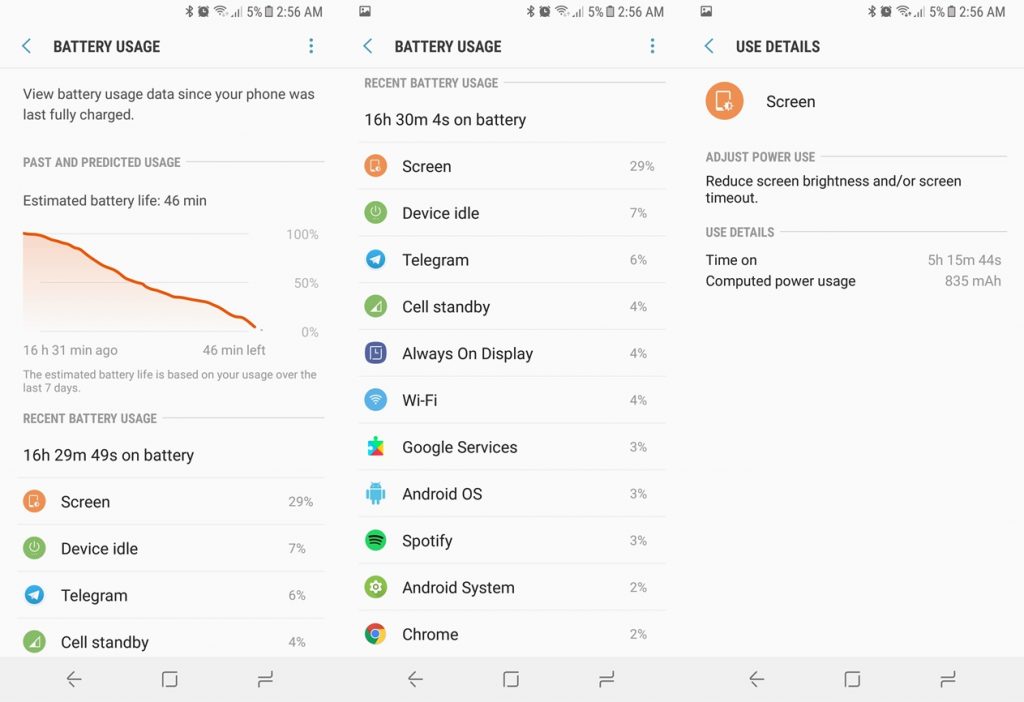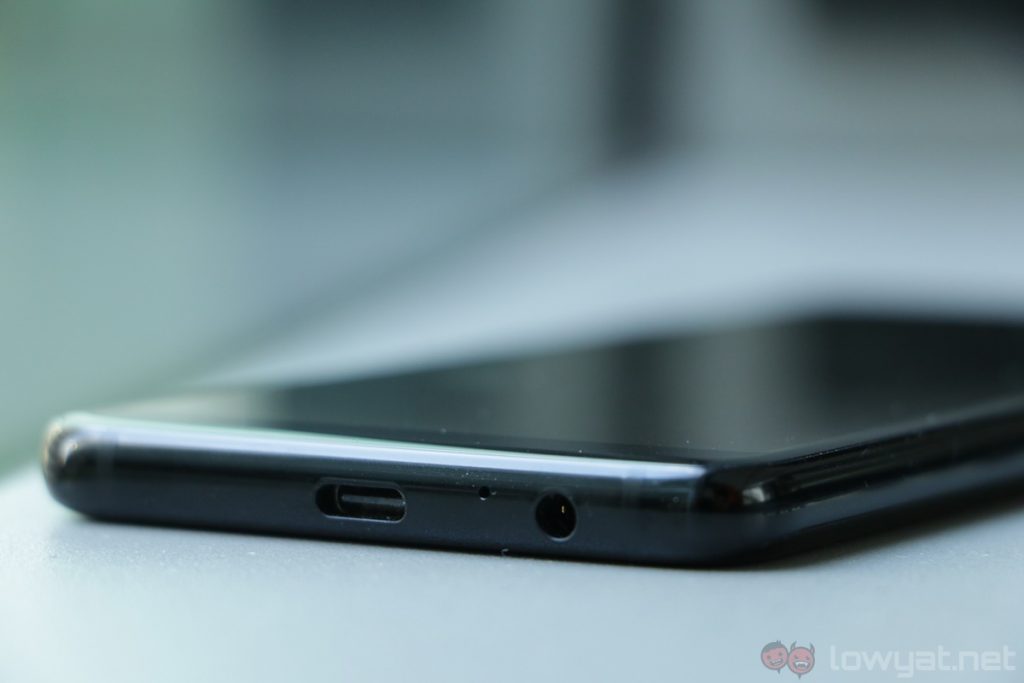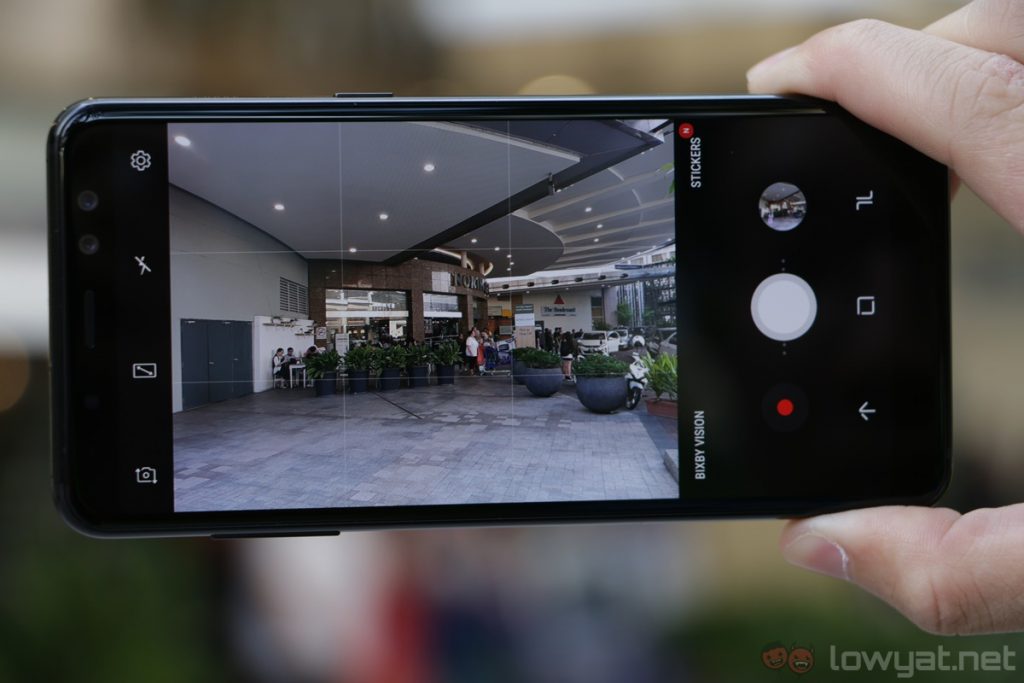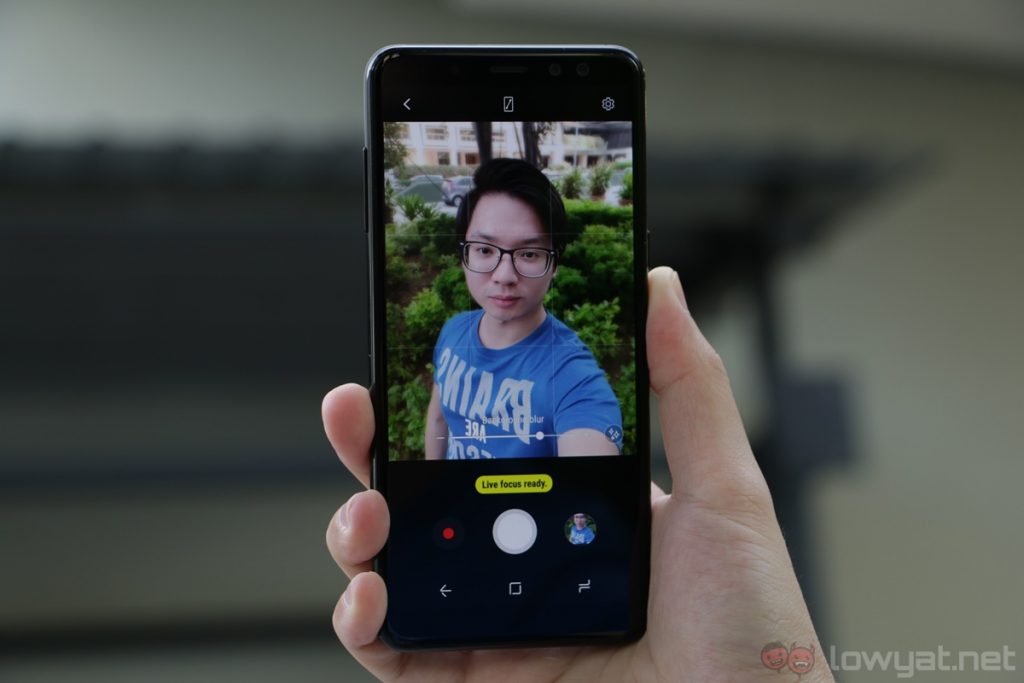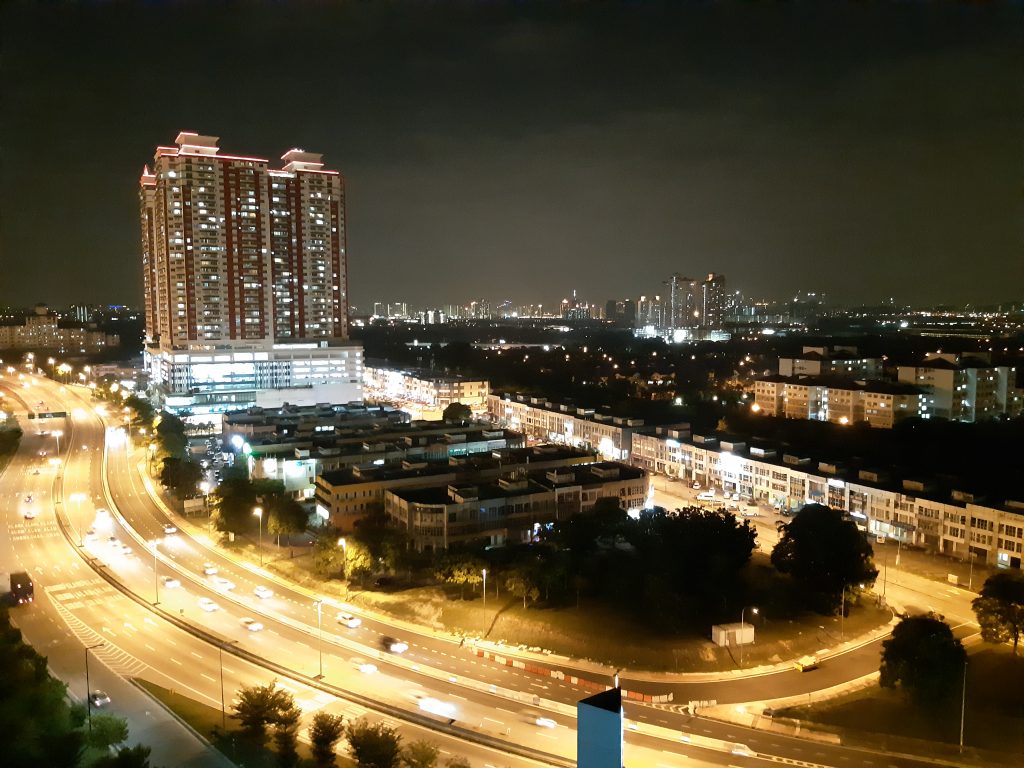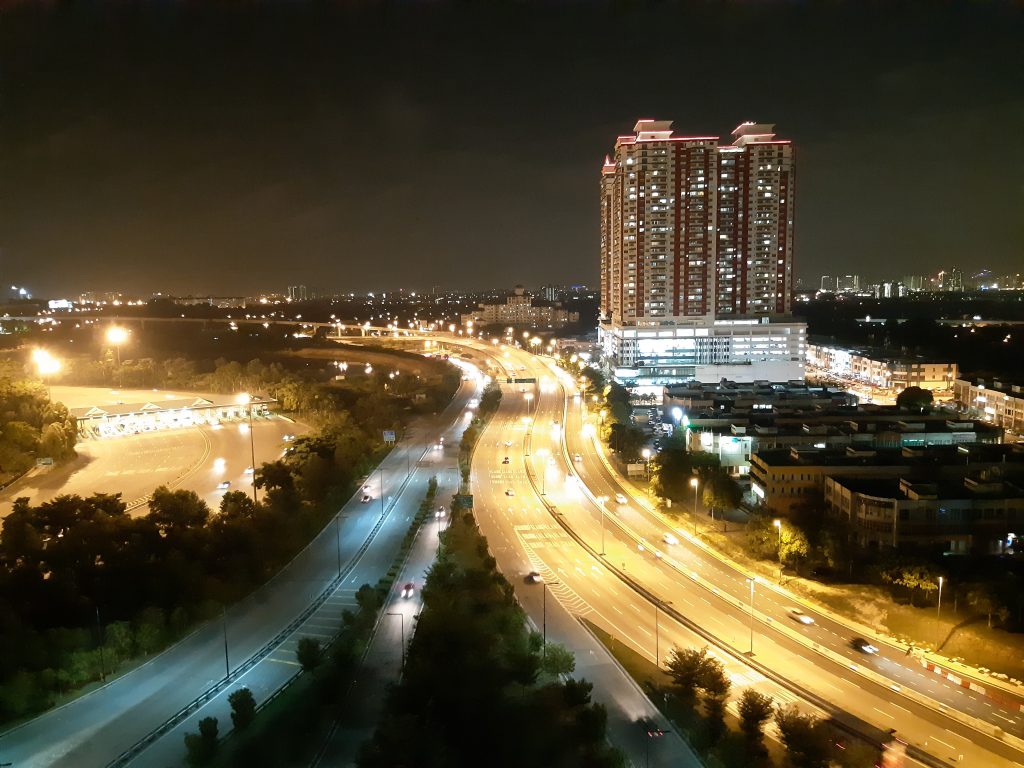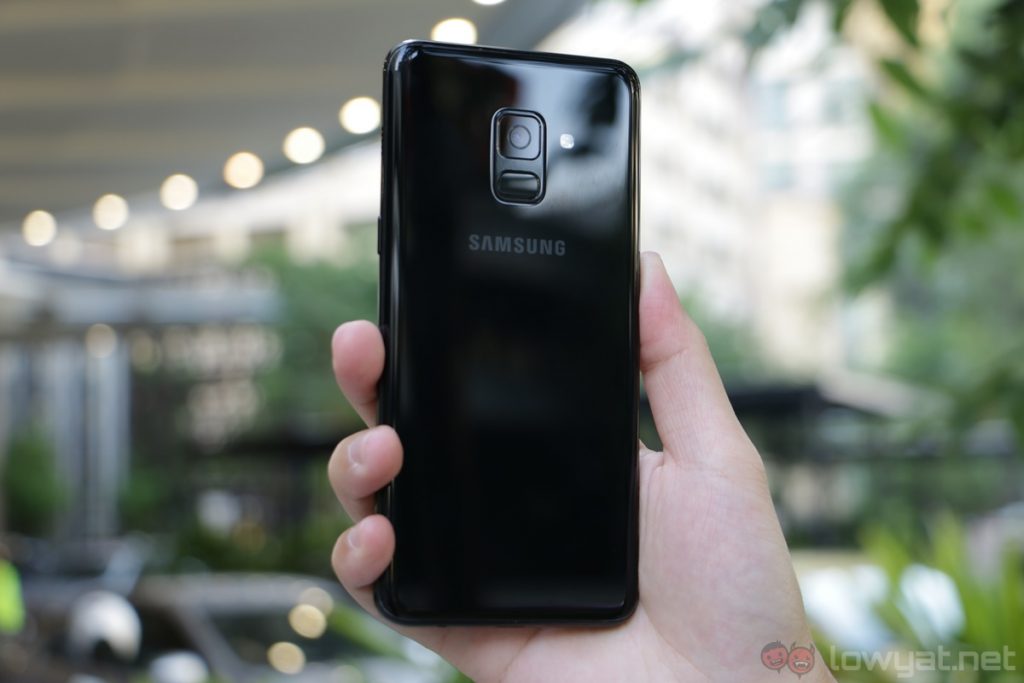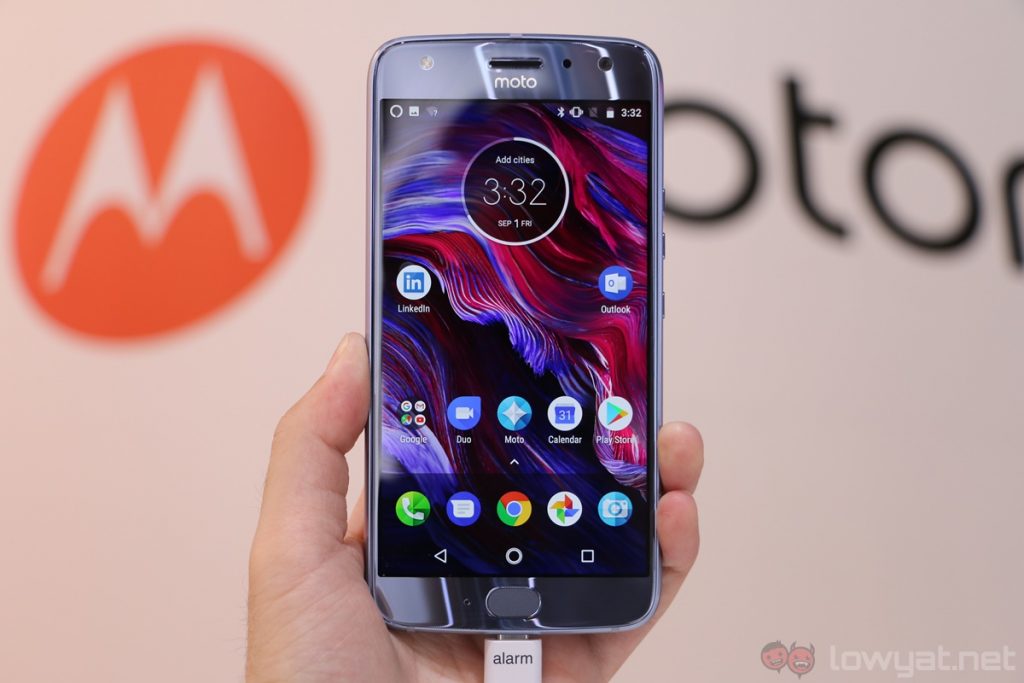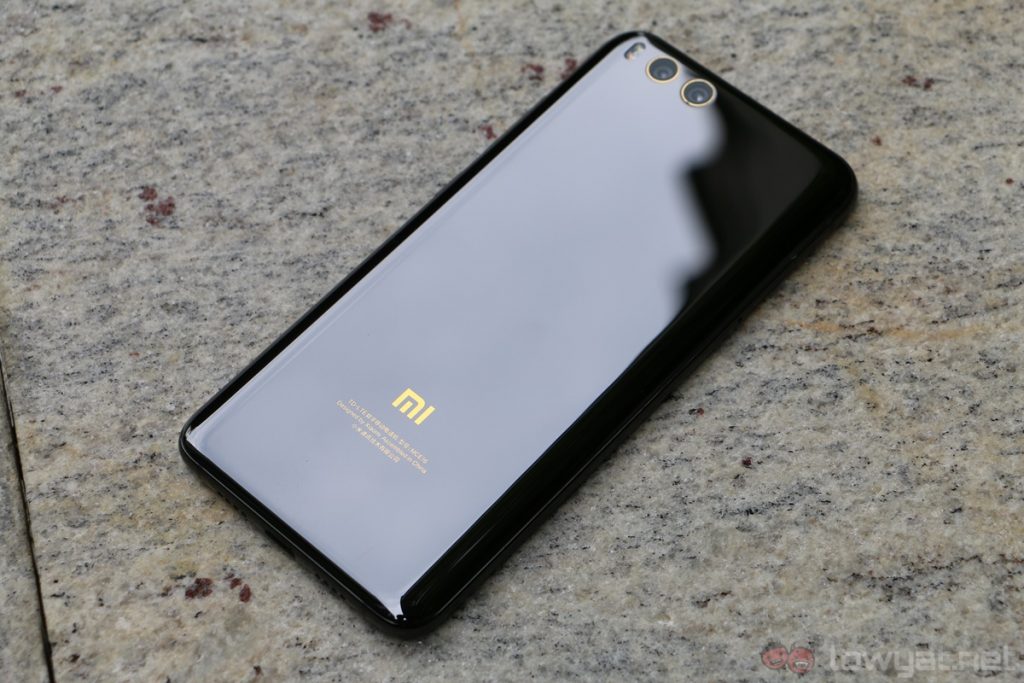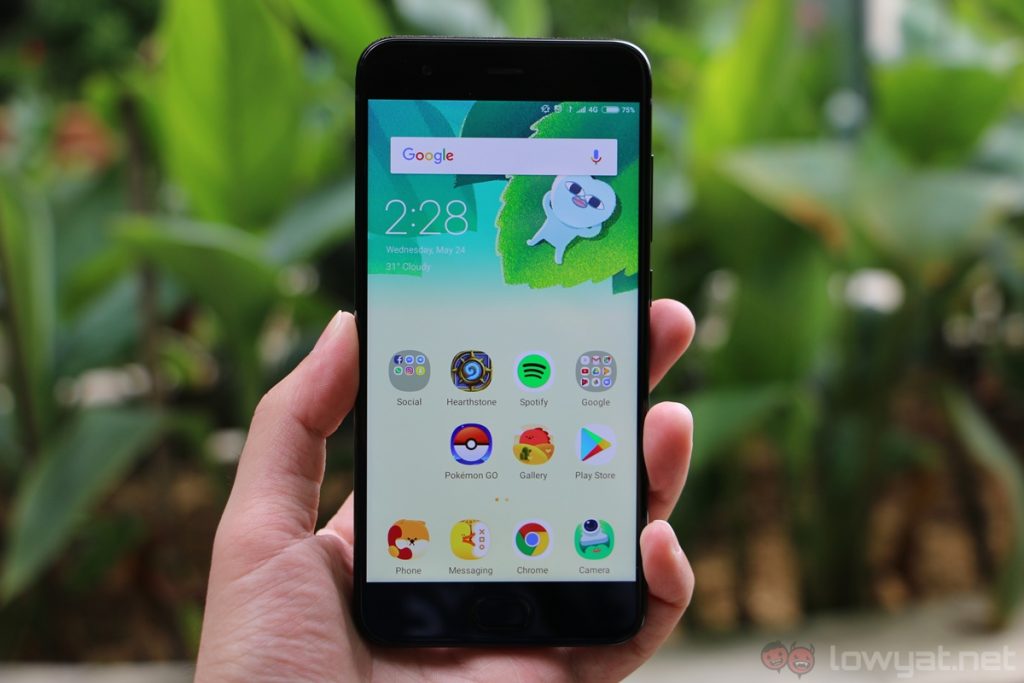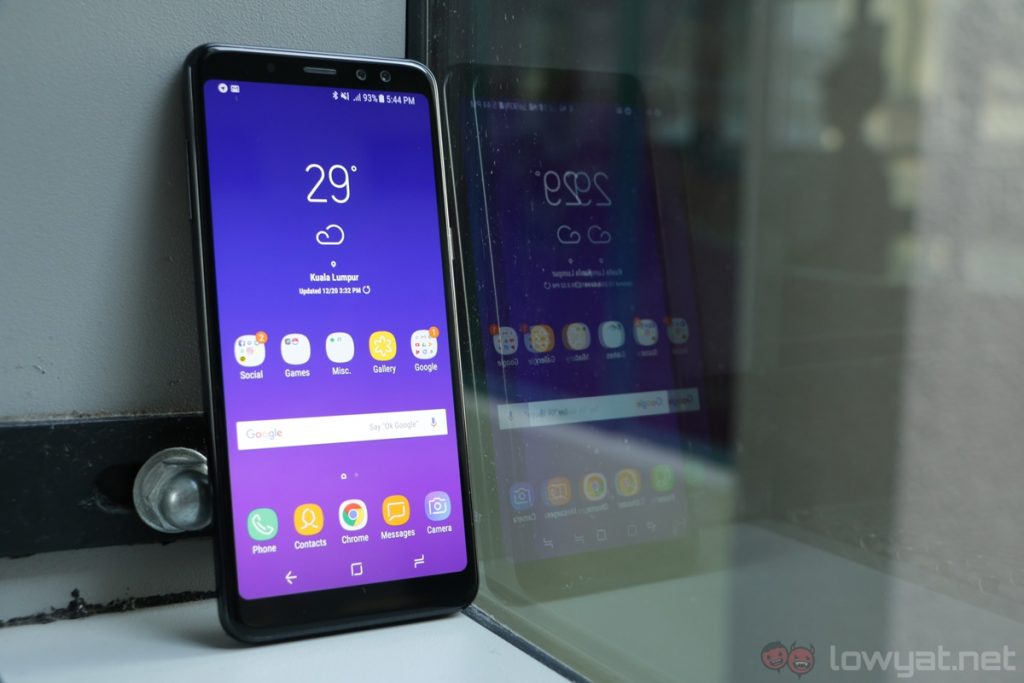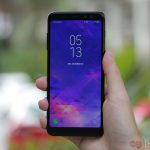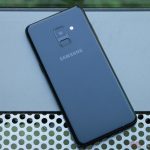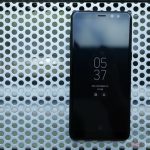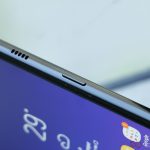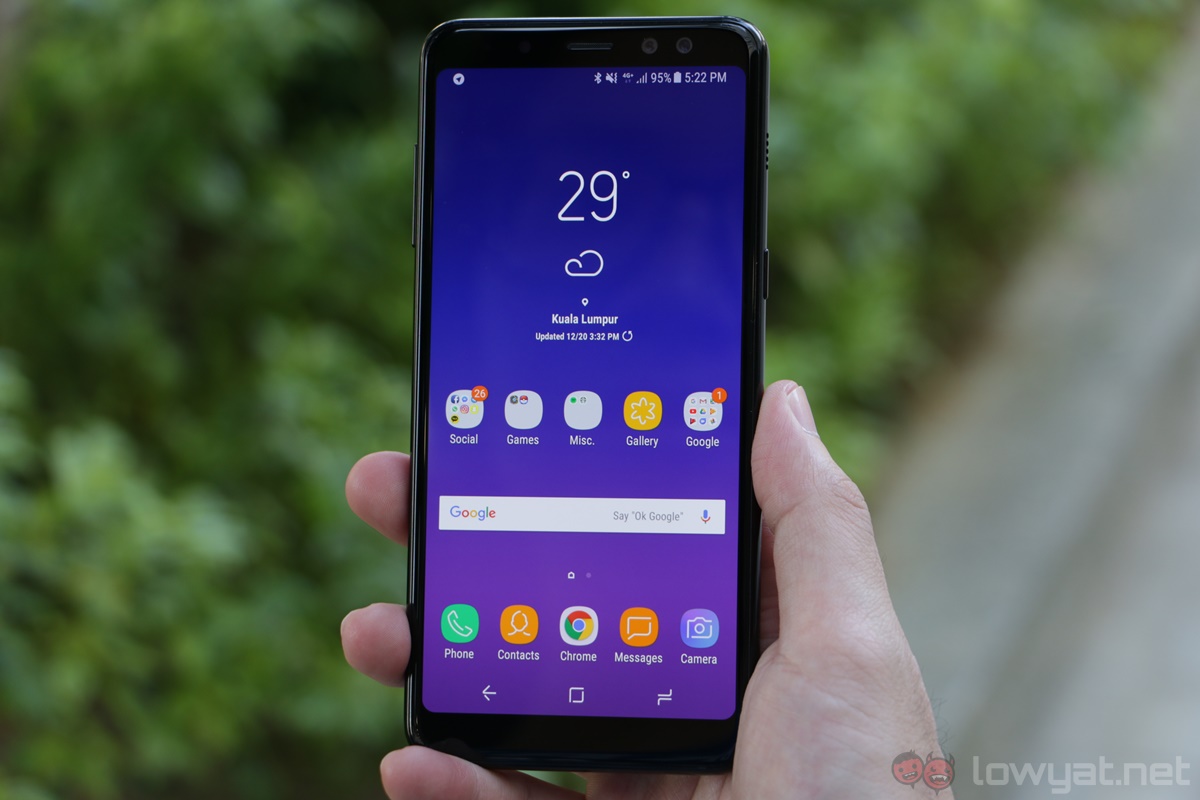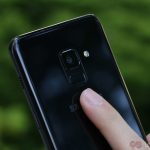Samsung’s new Galaxy A8 series of smartphones bring quite a drastic change to the lineup. Not only does it sport dual front cameras now, the Galaxy A8 (2018) gets Samsung’s signature Infinity Display too – this was previously available only on the Korean company’s flagship smartphones.
There are plenty of things to like about the Galaxy A8, and if priced right, this may just be the mid-range smartphone to beat.
Specifications
For a mid-ranger, the 2018 Galaxy A8 comes with pretty respectable hardware. The 5.6-inch Full HD+ Super AMOLED Infinity Display is very pleasant to look at, the Exynos 7885 chipset provides surprisingly fluid performance, and it even comes with IP68 rating – quite a rarity in the mid-range market.
Of course, one of the most interesting features of the Galaxy A8 is its new dual front cameras with Live Focus. Is it any good? Well, we’ll find out.
Design
The first time I held the Galaxy A8 in my hands, I was quite surprised by how compact it is. Although it has the same tall, narrow displays of its bigger, higher-end brothers, the fact that this is only a 5.6-inch display – as opposed to, say, the Galaxy S8’s 5.8-inch panel – gives it a really compact feel in hand.
The Galaxy A8 is one compact smartphone.
Of course, the Galaxy A8’s Infinity Display also gives the phone a modern, sleek-looking design; the narrow, 18.5:9 aspect ratio of the display makes it easier to use with only one hand too. However, while the bezels are quite minimal, they’re slightly on the thicker side of things – it’s not quite as impressive as the minuscule bezels of other bezel-less phones.
Display aside, the placement of the Galaxy A8’s rear fingerprint sensor is definitely an improvement: it is mercifully right below the camera lens now (instead of next to it on the Galaxy Note 8). While I wish Samsung would’ve placed the sensor further away from the camera – I still accidentally touch the lens from time to time – its placement makes a lot more sense than the Galaxy S8 and Note 8’s fingerprint sensors. I also like the fact that I can just swipe down on the sensor to pull down the Notification Shade (though this would sometimes result in accidentally swiping down the camera lens).
Much, much better fingerprint sensor placement.
When it comes to build quality, the Galaxy A8 is one solid smartphone. The glass and metal design looks and feels premium, and I quite like the overall heft of the phone – it weighs about 172g. The back glass panel is quite a fingerprint magnet, of course.
There’s no denying the sleek appeal of the new Galaxy A8 (2018), and the fact that it is also IP68 water- and dust-resistant is topping on an already sweet cake. Beyond design, the A8 has plenty of other likable qualities too.
User Experience
For the most part, Samsung Experience on the Galaxy A8 feels very similar to the software experience of the Galaxy Note 8 and Galaxy S8. The Always On Display proved to be very useful, the software looks very polished, and it feels quite lightweight too. Sure, it’s still running only on Android 7.1.1 Nougat, but it’s a refined software experience nonetheless.
In the performance side of things, the Galaxy A8’s Exynos 7885 feels surprisingly fast for a mid-range phone. Although the phone doesn’t exactly offer the same level of performance you’d expect from a flagship-tier device, it’s quick and responsive enough for daily usage. Gaming on the A8 is quite enjoyable too.
First Samsung mid-range phone with an Infinity Display.
This is the first time Samsung’s Infinity Display is available on a mid-range smartphone, and as it has always been with Samsung-made panels, the Galaxy A8’s 5.6-inch Super AMOLED, 18.5:9 display is impressive. It is bright, vibrant, and very pleasant to look at. The Full HD+ resolution is more than adequate for a display this size too.
Packed with a 3,000mAh battery, the Galaxy A8’s battery life is quite good as well. On average, I can get four to five hours of screen on time. Essentially, it’s quite effortless to get a day’s worth of battery life out of the A8.
Unfortunately, we didn’t manage to test the fast charging of the Galaxy A8: we didn’t have a compatible quick charger. Nonetheless, the phone does support fast charging.
For a mid-range smartphone, the Galaxy A8 is a surprisingly enjoyable smartphone to use as a daily driver. Its software experience is similar to what you get on Samsung’s flagship phones, it has a great display, and the battery life is quite impressive too.
Camera
One of the most touted features of the Galaxy A8 are its dual front cameras, so let’s start with that. Made up of 16MP and 8MP sensors, these two shooters can work independently or in tandem in Live Focus mode.
Basically, the selfie cameras come with three different shooting options. The first one is the default 16MP sensor, which is meant for tighter, closeup shots. The 8MP shooter, on the other hand, is designed for group selfies – or if you want to take a selfie and have a good view of the background. Last but not least is Live Focus mode, where both sensors work together to emulate a shallow depth of field.
From left to right: 16MP, 8MP, and Live Focus.
In my testing, the Live Focus mode does a very good job of separating the subject from the background. Although you’ll need good lighting for Live Focus to kick in – it refuses to work in low-light – you can get some good-looking selfie shots with bokeh effects.
Surprisingly capable cameras.
Selfie cameras aside, the Galaxy A8’s 16MP f/1.7 rear camera with phase detection autofocus is surprisingly capable too. It performs admirably in both daylight and low-light conditions, and the camera interface doesn’t feel sluggish either. However, the lack of optical image stabilisation does result in some blurry shots, and it has some trouble locking focus occasionally too.
But for a mid-range smartphone, the Galaxy A8’s rear camera performance is really quite impressive. In fact, I reckon it’s a better shooter than some flagship smartphones too – it’s that impressive. It would’ve been even better if Samsung had equipped the rear camera with optical image stabilisation.
As for the front camera, it appears Samsung is stepping up to the needs of the younger generation. The Galaxy A8 (2018) will likely cost more than the likes of Oppo and vivo’s selfie-centric phones, but it looks like the South Korean company is justifying it with a better overall feature set.
Sample Images
Competition
Samsung has yet to reveal the retail price of the new Galaxy A8, so coming up with a list of competition…is a little tricky. Nonetheless, we can compare it to other mid-range offerings, and one that particularly stands out is the RM1,899 Moto X4.
Much like the Galaxy A8, the Moto X4 is also IP68-rated; it looks pretty sleek too with its glass and metal construction. However, the A8’s tiny bezels and Infinity Display definitely give it a more appealing design in comparison to the X4’s more conventional 16:9 display.
In terms of sheer performance, the Galaxy A8 looks to be the better performer on paper – the Exynos 7885 has two faster Cortex-A73 on top of the six energy-efficient Cortex-A53 cores. In comparison, the X4’s Qualcomm Snapdragon 630 chipset is only equipped with eight Cortex-A53 cores.
Then again, the Moto X4 does come with double the storage space at 64GB; the Galaxy A8 unit we have for review only has 32GB of storage. But if taking selfie shots appeals the most to you, the Galaxy A8 is definitely the more suitable choice.
Aside from Motorola’s offering, there’s also the Xiaomi Mi 6. Although the Mi 6 is a flagship smartphone, its sub-RM2,000 price tag comfortably puts it as a good contender to a premium mid-range phone like the Galaxy A8.
For RM1,899 – the same price point as the Moto X4 – the Mi 6 offers a faster Qualcomm Snapdragon 835 chipset paired with 6GB of RAM, double the internal storage at 64GB, and a dual-camera system on the back with Portrait Mode. On top of that, it has slightly better battery life too thanks to its larger 3,350mAh cell.
But the Galaxy A8 arguably offers much more than the Mi 6. Although it’s not quite as capable as Xiaomi’s offering in the performance department, the A8 has a sleeker design, a better display, support for expandable storage – the Mi 6 doesn’t have a microSD card slot – and it’s IP68-rated too. To top it off, it even comes with a 3.5mm headphone jack the Mi 6 lacks.
And then there are also the various selfie-centric smartphones like the Oppo F5 and vivo V7. While their price points will likely be lower than the Galaxy A8 (2018), Samsung is banking on a mix of better hardware and premium design to entice customers.
Conclusion
The Samsung Galaxy A8 (2018) is quite easily the Korean company’s most impressive mid-range smartphone yet. Not only does it look sleek, its overall feature set – especially its camera performance – is well above what you’d expect from a mid-range smartphone.
Price will dictate the Galaxy A8’s success.
All that’s left is for Samsung to reveal the Galaxy A8’s retail price. If priced right – we’re definitely expecting this to be priced below the RM2,000 mark – the Galaxy A8 (2018) could just be a winner for Samsung.
Photography by Leon Lam.
Follow us on Instagram, Facebook, Twitter or Telegram for more updates and breaking news.



